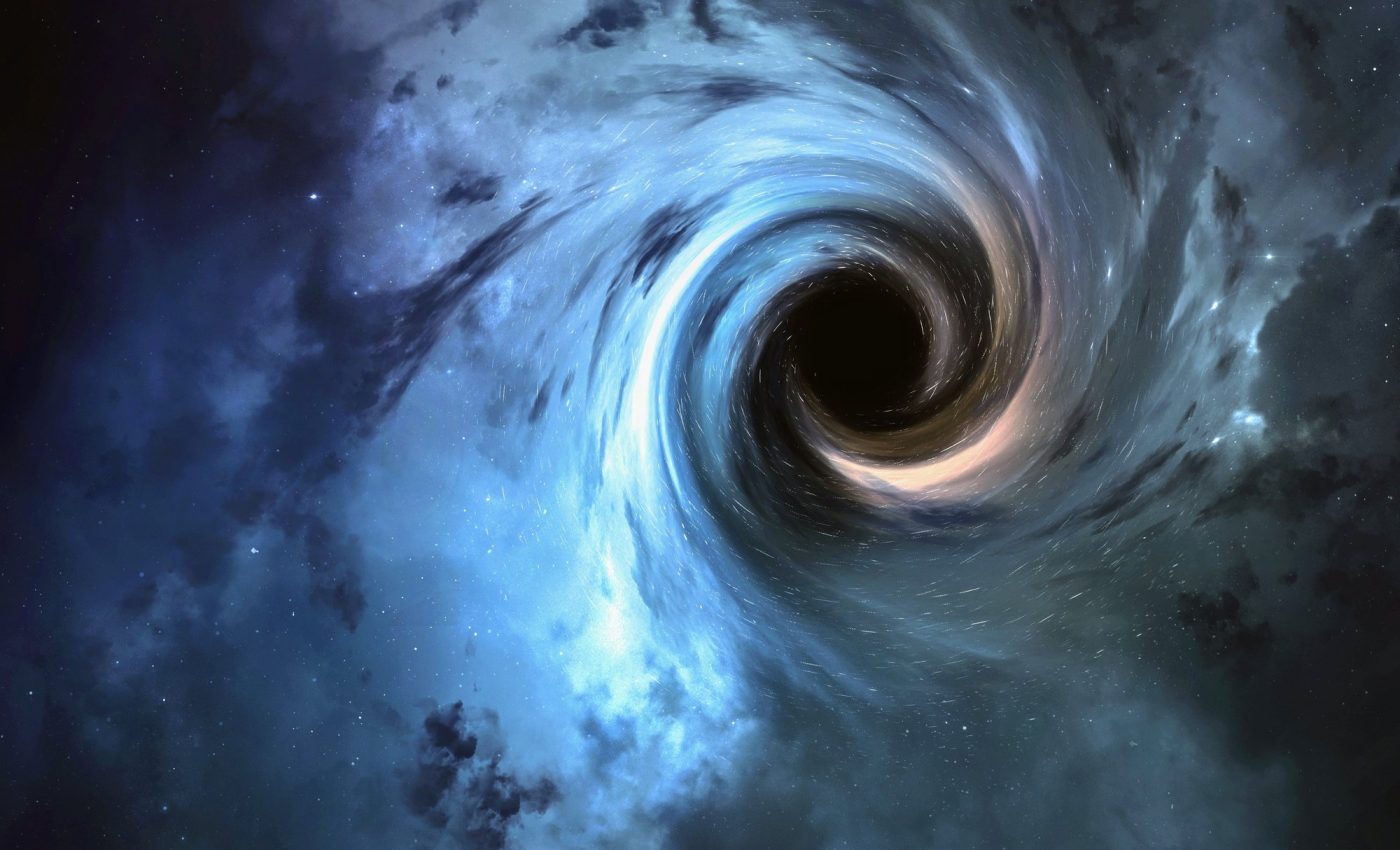
Early black holes were too scarce to explain the unseen universe
Primordial black holes (PBHs) are being reevaluated through the application of quantum field theory – a concept traditionally reserved for microscopic phenomena – to the vast expanses of the early universe.
Researchers have found a surprising scarcity of these miniature black holes, contradicting many existing models.
Primordial black holes are considered potential candidates for dark matter, the elusive substance that constitutes a significant portion of the universe’s total mass yet remains invisible.
What are primordial black holes?
Primordial black holes (PBHs) are a theoretical type of black hole formed in the early universe, shortly after the Big Bang.
Unlike black holes formed from the collapse of massive stars, PBHs could have originated from high-density regions in the young universe due to extreme fluctuations in density. These black holes vary in size and mass, potentially ranging from microscopic to several solar masses.
It is believed that these early-formed black holes could explain the missing mass not accounted for by visible matter.
However, recent studies using quantum field theory suggest that PBHs might be scarcer than previously thought, challenging their viability as dark matter candidates.
Inflation, dark matter, and primordial black holes
The universe is an ancient expanse, about 13.8 billion years old, originating from a massive explosion and expanding rapidly in a phase known as inflation. This process transformed the universe from a uniform state into one rich with structure and detail.
Despite the vast empty spaces, the universe weighs more than visible matter can account for, leading scientists to hypothesize the existence of dark matter. Recently, ancient black holes have emerged as possible explanations for this discrepancy.
“Primordial black holes are fascinating not only as dark matter candidates but also because their large numbers could explain the binary black hole mergers observed through gravitational wave astronomy. However, despite theoretical expectations of their abundance, actual observations have been lacking, pointing to a gap in our understanding,” noted Jason Kristiano, a graduate student involved in the research.
Theoretical models
Kristiano, along with his supervisor, Professor Jun’ichi Yokoyama, director of two prominent research institutes at the University of Tokyo, have meticulously examined the prevailing theories of primordial black hole formation.
Their analysis reveals a mismatch between these theories and the observations of the cosmic microwave background (CMB) – the residual radiation from the Big Bang, which serves as a cosmic fingerprint of the universe’s inception.
To address this discrepancy, Yokoyama and Kristiano revised the leading model of PBH formation from cosmic inflation, aligning it more closely with observed data. Their revised theory awaits further validation from upcoming observations by global gravitational wave observatories.
“At the universe’s beginning, it was infinitesimally small – smaller than an atom. Cosmic inflation then expanded it dramatically. During this period, small fluctuations could generate large amplitude but short wavelength waves,” explained Yokoyama.
“We discovered that these small but intense waves could amplify longer waves that we now detect in the CMB. This occasional coherence among early, short waves, describable by quantum field theory, suggests a rare but significant influence on larger-scale cosmic structures.”
Primordial black holes and cosmic insights
The study posits that early, small-scale fluctuations may reshape our understanding of the universe’s coarse structures.
Moreover, measuring CMB wavelengths can help constrain the properties of wavelengths from the universe’s earliest moments, which in turn limits potential phenomena dependent on these short, powerful waves – including the formation of primordial black holes.
“The early universe’s short but strong wavelengths likely led to the creation of PBHs. However, our findings indicate that there should be far fewer PBHs than required if they are to be considered viable candidates for dark matter or sources of gravitational waves,” noted Kristiano.
As research continues, the world’s leading gravitational wave observatories – LIGO in the U.S., Virgo in Italy, and KAGRA in Japan – are actively engaged in missions to detect these elusive small black holes.
The outcomes of these observations are anticipated to provide crucial data, helping researchers refine their theories and possibly reshaping our understanding of the universe’s dark matter.
Through this innovative application of quantum field theory to cosmology, the study not only challenges existing paradigms about primordial black holes and dark matter but also underscores the intricate connections between the smallest particles and the vast cosmic structures, highlighting the universe’s profound complexity and the continuing mystery of its true composition.
The study is published in the journal Physical Review Letters.
—–
Like what you read? Subscribe to our newsletter for engaging articles, exclusive content, and the latest updates.
Check us out on EarthSnap, a free app brought to you by Eric Ralls and Earth.com.
—–













